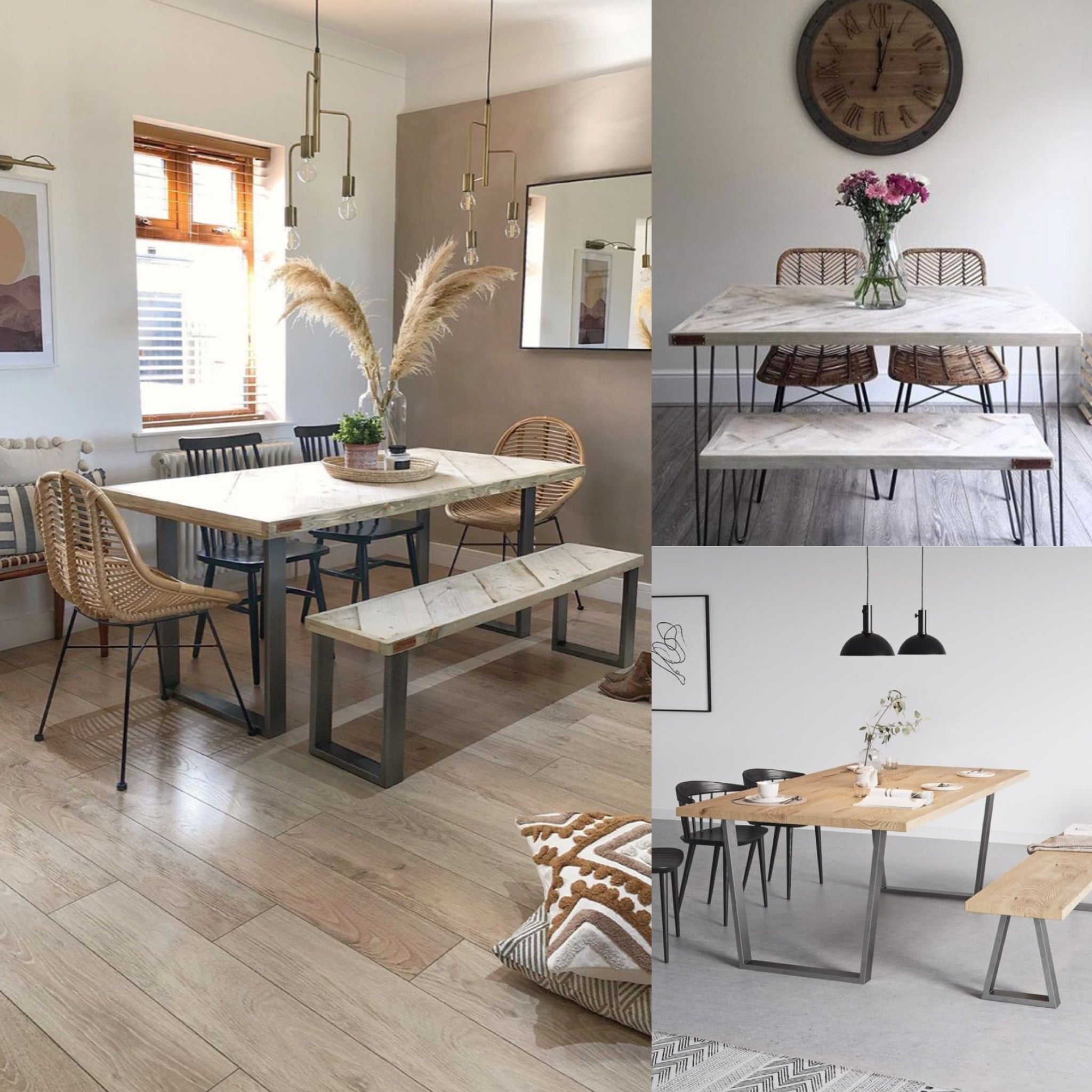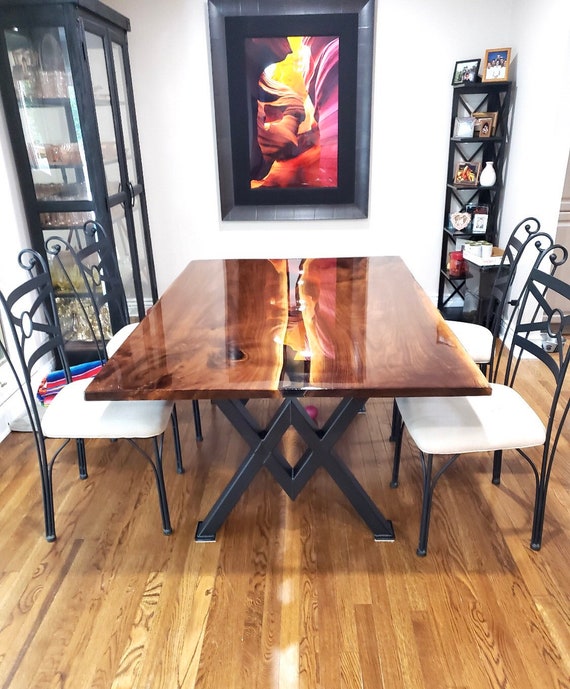Why Custom Dining Room Table Legs Are Worth the Investment
Why Custom Dining Room Table Legs Are Worth the Investment
Blog Article
From Typical to Modern: Find the Ideal Dining-room Table Legs for Your Design
The choice of dining room table legs plays a critical duty in specifying the overall personality of your room, linking the space between traditional workmanship and modern-day aesthetics. While traditional layouts such as cabriole and transformed legs stimulate a feeling of timeless refinement, contemporary styles like barrette and geometric alternatives provide an opportunity for striking aesthetic rate of interest. Reviewing the right equilibrium between these styles requires a nuanced understanding of your existing décor and individual preference. As you think about these components, the inquiry remains: exactly how can you effortlessly incorporate these diverse leg designs to develop an unified eating experience?
Comprehending Table Leg Styles
The variety of dining-room table leg designs can dramatically affect both the looks and capability of the room. Each leg design contributes distinct aesthetic elements and sensible attributes, satisfying varied style preferences and usage demands. Understanding these designs is critical for selecting the appropriate eating table that aligns with your overall indoor style vision.
As an example, conical legs use a tidy, timeless appearance that can enhance a room's sophistication, while stand bases supply security and make best use of legroom, making them optimal for smaller sized rooms. Barrette legs, a trademark of mid-century contemporary style, present a commercial flair, permitting a ventilated, open feel. Trestle legs stimulate rustic appeal, providing durable assistance and a sense of timelessness.
Moreover, the selection of materials plays a significant function. Wood legs can bring heat and structure, whereas steel alternatives often share a sleek, contemporary ambiance. Eventually, understanding table leg designs is vital for developing a natural eating location that reflects individual style while ensuring usefulness and comfort. By thoughtfully thinking about these components, you can improve both the visual and functional allure of your dining area.
Standard Table Leg Options
When choosing eating area table legs, standard alternatives usually embody ageless elegance and workmanship. These designs reflect an abundant heritage and a dedication to high quality, making them perfect for those that value timeless aesthetics.
One of the most famous typical leg designs is the cabriole leg, characterized by its stylish rounded shape. This design often includes ornamental makings and is most generally found in Queen Anne and Chippendale furniture. One more preferred option is the turned leg, which boasts a collection of smooth, rounded forms that offer a traditional look while preserving stability.
Additionally, the straight leg, while basic, offers a basic and sturdy framework that can blend seamlessly with a variety of tabletop designs. For those drawn to ornate describing, claw-and-ball feet legs evoke a sense of magnificence and can function as a sensational centerpiece in any eating space.
Lastly, stand bases, although not strictly legs, give an alternative standard choice that permits for enough legroom and can be wonderfully sculpted. Each of these traditional leg designs contributes to the overall atmosphere of a dining-room, weding function with aesthetic appeal.

Modern Table Leg Layouts
Modern table leg designs offer a diverse range of styles that emphasize ingenious products and clean lines. These designs commonly focus on performance while offering as striking focal factors within a dining area. Minimalist visual appeals prevail, with legs crafted from materials such as metal, glass, and engineered timber, which add to a ventilated and contemporary feeling.
One popular style is the barrette leg, defined by its slim, tapered structure that offers security without overwhelming the tabletop (dining room table legs). This design is often located in mid-century modern furnishings and can effortlessly match different dining table forms. Another trend is the use of geometric shapes, where legs may take on asymmetrical or angular kinds, adding visual interest and a touch of creativity

Mixing Styles for Special Areas
Typically, property owners look for to create distinct dining areas that show their individual design by blending various style components. This technique enables the incorporation of varied visual appeals, leading to an unified yet distinctive environment. For example, matching a rustic wooden table with streamlined, contemporary metal legs can create a click to investigate distinctive contrast that boosts the area's general allure.
Furthermore, incorporating vintage table legs with modern tabletops can evoke a sense of history while preserving a contemporary perceptiveness. Such combinations not just showcase individual taste yet likewise motivate creativity, permitting property owners to curate a space that feels both individual and inviting.
Shade plays a vital function in this blending process; choosing table legs that enhance or contrast with the existing color pattern can boost aesthetic rate of interest. Whitewashed legs can soften the more info here daring of a dark table surface, creating a balanced visual.
Tips for Picking the Right Legs
Choosing the right table legs is crucial for accomplishing both performance and aesthetic allure in your dining space. Begin by considering the overall style of your room. Typical settings gain from legs that include elaborate makings or turned designs, while modern rooms may require streamlined, minimal designs.
Next, analyze the elevation and security of the legs. dining room table legs. Standard dining tables range in between 28 to 30 inches in height, so ensure the legs match this dimension for comfort. Furthermore, robust materials, such as wood or metal, can boost security and long life
Evaluate the leg shape as well-- choices consist of directly, tapered, or pedestal layouts. Straight legs use a traditional appearance, while tapered legs can include a touch of sophistication. Pedestal bases supply ample legroom and are ideal for smaller spaces.
Final Thought
In summary, selecting the suitable dining room table legs calls for careful factor to consider of both standard and modern styles. By integrating leg design, height, and product with the overall design, a cohesive and welcoming ambience can be achieved.
The selection of eating room table leg designs can considerably affect both the visual appeals and capability of the room. Eventually, recognizing table leg styles is vital for developing a natural eating area that shows personal why not try this out style while making sure functionality and convenience.One of the most legendary conventional leg designs is the cabriole leg, defined by its graceful bent form. Straight legs supply a timeless look, while tapered legs can add a touch of elegance.In summary, selecting the optimal eating room table legs requires careful factor to consider of both modern-day and typical styles.
Report this page